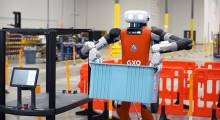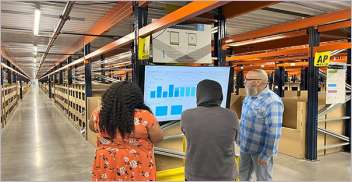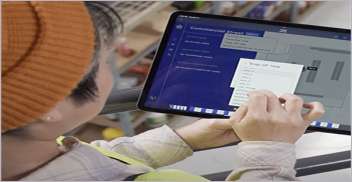The demand for automation is on the rise, driven by the desire to increase production efficiency, improve product quality, and reduce errors. The growing need for automation in businesses and the development of smart factories are major factors contributing to the expansion of the robot market.
According to ResearchAndMarket’s “Global Collaborative Robot (COBOT) Market (by Payload Capacity, End User, Application, & Region): Insights & Forecast with Potential Impact of COVID-19 (2022-2026)” report, the global collaborative robot market is expected to reach $1.6 billion in 2023, growing at a CAGR of 26.12% during the forecast period.
The Asia Pacific region, which includes countries like China, Japan, South Korea, India, and others, is a dominant player in the global collaborative robot market, accounting for nearly half of the market share. The projected growth is driven by the presence of both global and domestic players, with China being a particularly significant contributor. Additionally, factors such as an aging population and rising labor costs in several Asian countries are expected to further boost market growth in the coming years.
Among the report’s key highlights:
Smart factories are on the rise. The number of smart factories has been rapidly increasing to reduce production process time and expenses. These smart factories are full of robots and automation equipment, including collaborative robots, which play an important role. Collaborative robots allow for intelligent automation and help establish safer, more productive work environments in which the interaction between machines and humans is optimized with each of their traits and skills fully utilized. The use of collaborative robots helps achieve higher levels of cooperation and efficiency, and the growing number of smart factories is driving growth in this sector.
Cybersecurity remains a challenge. The risk of data breaches is high since robots may collect and store a vast amount of personal information. If a hacker gains control of a collaborative robot, the invader may make mistakes in part manufacturing, which could result in significant losses. A new cyber-security plan aiming at providing end-to-end protection for robots has been released by a number of governments, including Japan.
Even so, the compromise on privacy will continue to be a big obstacle for the collaborative robot business, as many users will feel like they are constantly being watched and will be afraid of losing vital information such as financial data and company secrets. Increasing cyber security threats for connected collaborative robots as a result of IoT integration as well as a lack of information about organizational networks are important restraints on the market's growth.
5G network exposure. To address the needs of each cobot machine cell, microfactories include dozens of production cells, each of which require varied latency from the 5G network slice. The 5G network brings up new opportunities for high-tech warehouses and industrial plants where collaborative robots coexist with other cutting-edge technologies such as computer vision, augmented reality, and big data platforms.
Industrial networks and equipment could be safer as a result of advancements in 5G and cobots. If any person got too close to the cobots, the 5G connection can stop it in a millisecond, providing enhanced safety in close surroundings.
The COVID-19 factor. Until the end of 2019, the collaborative robot growth was trending positive. However, the COVID-19 outbreak further restricted market expansion and investment in collaborative robots, which were expected to increase in 2020. Morever, the largest original equipment manufacturer for collaborative robots was heavily impacted by the pandemic, which only exacerbated issues for suppliers and. In spite of COVID-19's effects and uncertainties, merger and acquisition (M&A) activity in the robotics industry persisted in the first half of 2021, fueled by intense competition and businesses' desire to diversify their portfolios.
Go here for more information about this report.
Article topics
Email Sign Up















